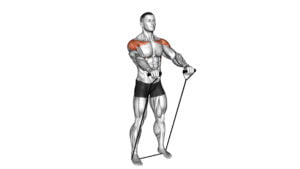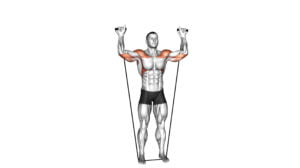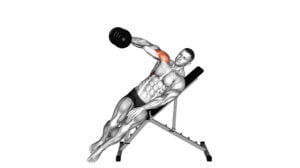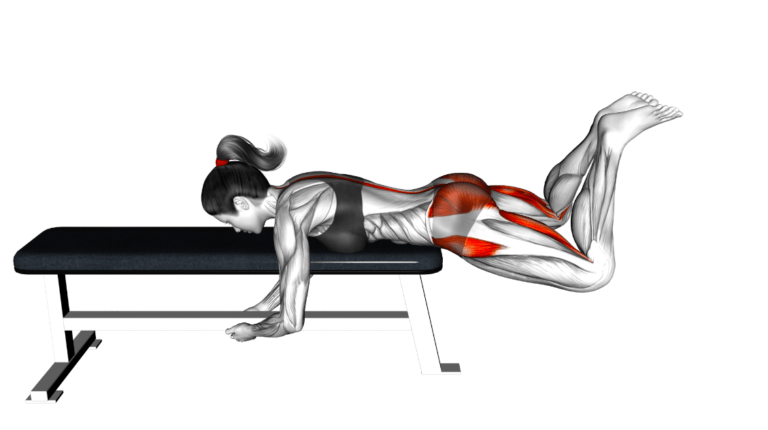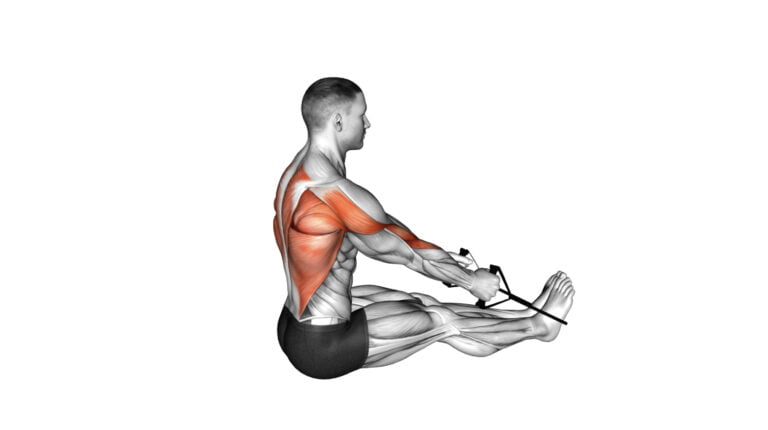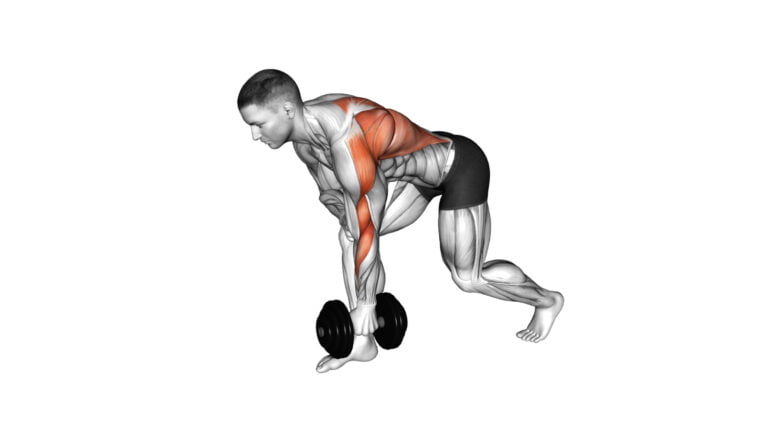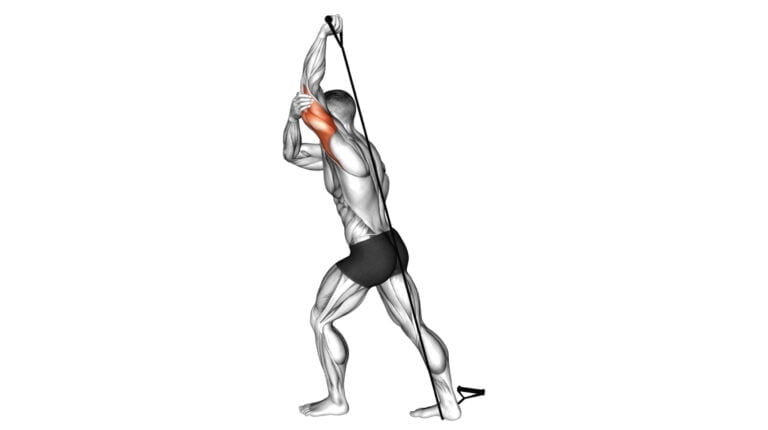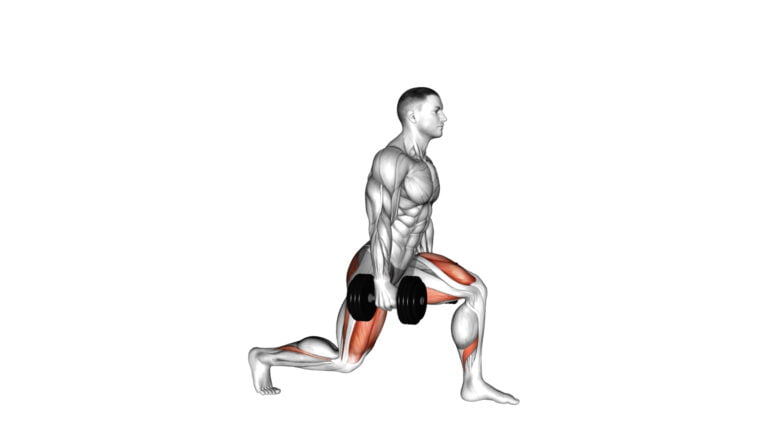10 Deltoid Exercises With Cables For Sculpted Shoulders
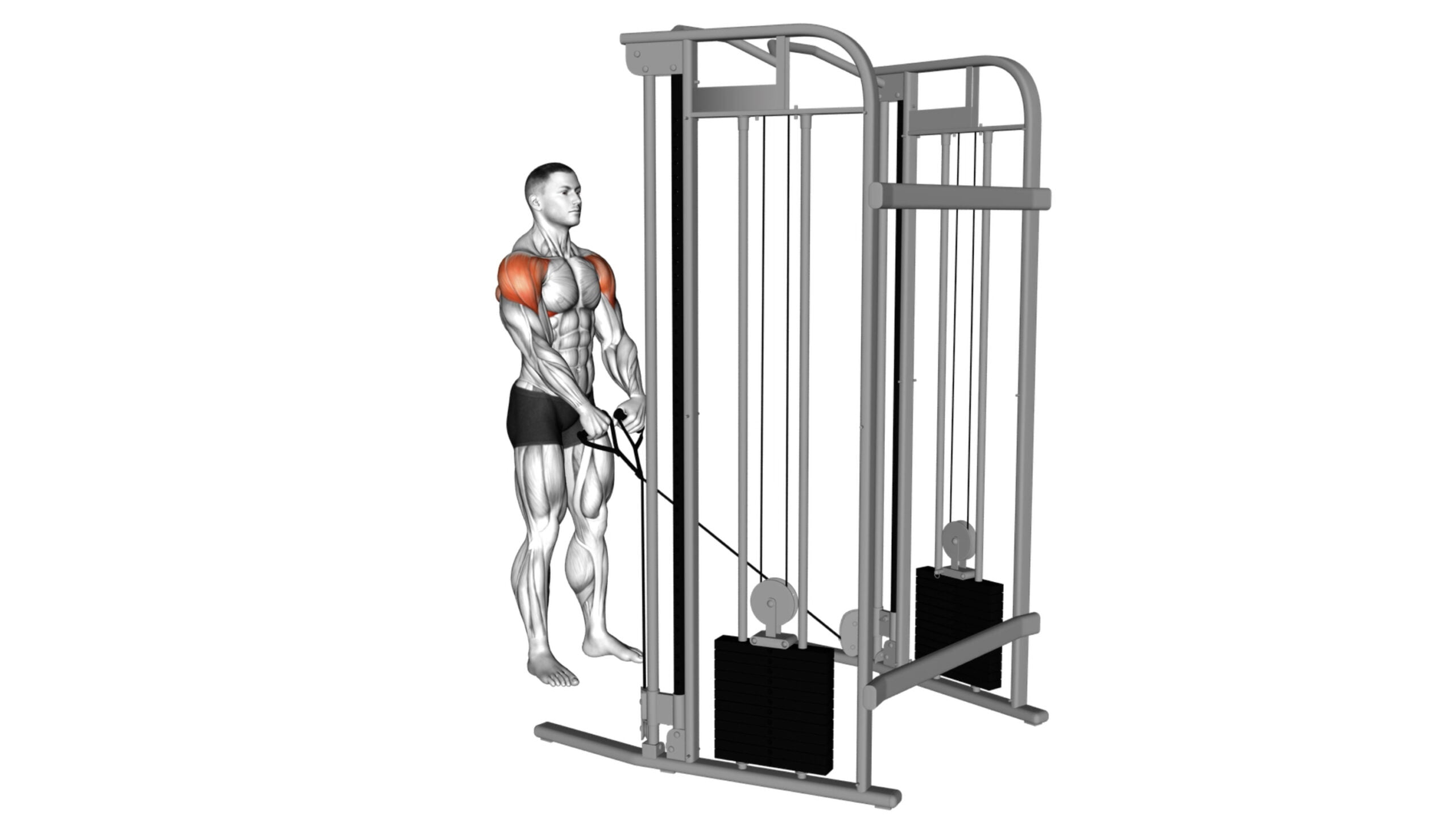
For those with fitness aspirations, sculpting well-defined shoulders is a pinnacle of success; but amidst the abundance of advice, finding effective methods can be overwhelming. As a seasoned personal trainer and strength coach with over a decade in the trenches, I’ve seen plenty of trends come and go.
However, one constant remains: deltoid exercises with cables are an unparalleled tool for building robust and shapely shoulders.
Crafting that coveted V-shaped physique hinges on more than just repetitive lifting; it requires smart training techniques to target muscles from multiple angles. That’s why incorporating cable work is critical—cables offer resistance through diverse planes of motion essential for comprehensive shoulder development.
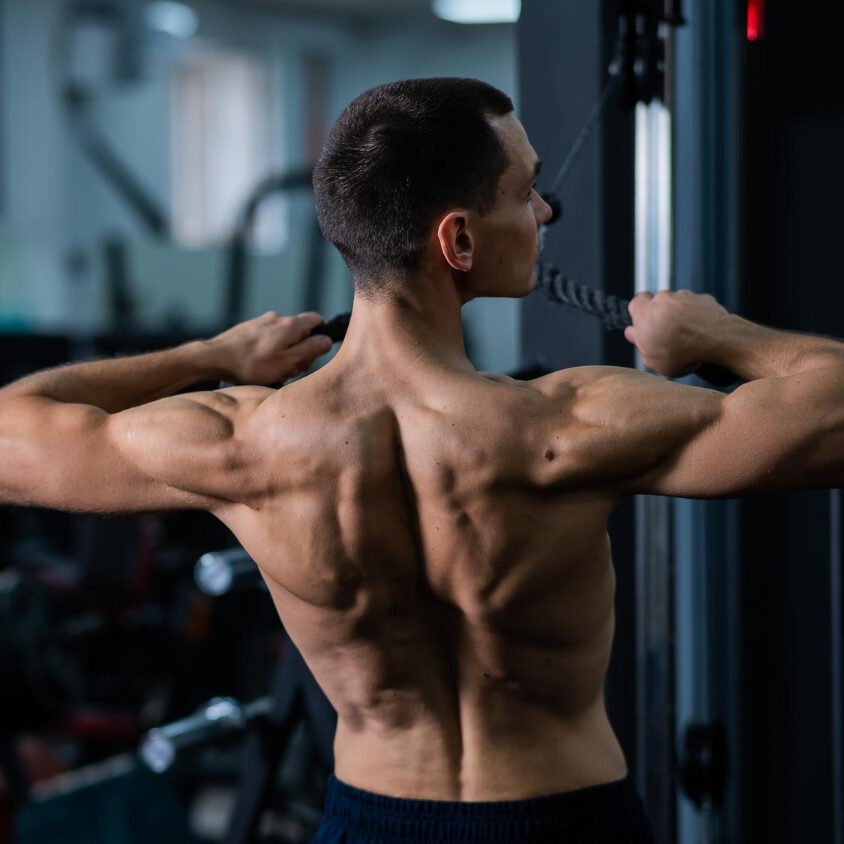
Dive into this read to unlock ten strategic cable maneuvers designed to enhance your upper body aesthetics and performance—and stay tuned, as the final tip might just redefine your entire workout regimen.
Key Takeaways
- Cable deltoid exercises offer a customizable and versatile approach, allowing you to target your shoulder muscles from multiple angles for balanced development.
- The constant resistance provided by cable machines ensures proper muscle activation, which can lead to greater strength gains and more sculpted shoulders.
- Incorporating both unilateral and bilateral movements in cable exercises helps address muscular imbalances and enhances overall shoulder stability.
- A combination of different cable exercises targeting various parts of the deltoids contributes to a well-rounded shoulder workout that improves function in everyday movements.
- Beginners should start with lighter weights and focus on form, while more advanced individuals can customize their workouts with varying reps, sets, and intensities for continued progression.
Benefits of Cable Shoulder Exercises
Cable shoulder exercises offer a versatile and customizable way to target the deltoid muscles, allowing for proper body positioning and diverse loading angles. They also provide a secure grip and allow for unilateral movement, making them effective for sculpting and strengthening the shoulders.

Versatile and customizable
Cable shoulder exercises offer unbeatable versatility for targeting the complex muscles of your shoulders. By easily adjusting the cable machine’s height and choosing different attachments, you can hit your deltoids from every angle, ensuring balanced muscle growth and preventing workout boredom.
Switching grips between overhand and neutral or playing with angles stimulates both the anterior deltoid for frontal elevation and medial deltoids for abduction movements.
Customization is a breeze with cable machines; whether you’re executing rear delt flys to work on your posterior deltoids or focusing on internal rotation to strengthen those critical rotator cuff muscles, these workouts mold to fit any goal.
They cater not just to bodybuilders aiming for hypertrophy but also individuals rehabilitating a shoulder injury. The ability to alter resistance levels allows beginners and seasoned lifters alike to practice progressive overload safely – that’s tailoring at its best!
Allows for proper body positioning
Proper body positioning is pivotal when engaging in deltoid exercises, especially with cables. This precision ensures that the shoulder joint and surrounding muscles, like front delts, side delts, and rear deltoids, are targeted effectively without risking injury.
It also promotes maximum muscle activation which can lead to better strength gains and more defined shoulders. Utilizing cables allows you to maintain a natural alignment as you perform movements such as lateral raises or front raises.
The steady resistance provided by the cable machine supports your upper arm through its full range of motion while keeping stress off unwanted areas.
Ensuring each rep counts starts with setting up the correct stance; feet should be planted firmly on the ground with your core engaged for stability. Your palms grip securely onto the handles or attachments, allowing for a smooth execution of each exercise whether it’s an upright row or shoulder press.
A well-positioned workout can carve out those sought-after muscle separations between biceps and triceps as well as clearly define where your shoulder blades sit against your back—the hallmarks of strong, sculpted shoulders.
Next up: Offers diverse loading angles; offering new challenges and opportunities to diversify anyone’s resistance training routine.

Offers diverse loading angles
Cable machines are a game-changer for your shoulder workouts because they offer diverse loading angles that free weights can’t match. This feature is crucial for hitting all three parts of your deltoids—front, middle, and rear—to ensure balanced muscle development.
Changing the angle of pull by adjusting the cable position allows you to target different fibers within your deltoid muscles more effectively than with standard dumbbell exercises.
Experimenting with various heights and directions engages not only the main shoulder muscles but also stabilizers like rotator cuff tendons, improving overall joint health and functionality.
For instance, performing lateral raises with cables coming from below targets the middle delts, while pulling from above isolates rear delts effectively. Cable machines provide continuous tension throughout the movement range which maximizes muscle activation leading to better strength gains and sculpted shoulders.
Provides a secure grip
Ensuring a secure grip, cable shoulder exercises offer stability and control throughout the entire range of motion. This prevents slipping or losing hold of weights, allowing you to focus on targeting the deltoid muscles effectively.
The ergonomic handles and adjustable attachments accommodate various hand positions, giving you confidence and stability during each exercise.

Allows for unilateral movement
Performing deltoid exercises with cables allows for unilateral movement, targeting each shoulder independently. This helps to address any muscular imbalances between the left and right sides.
By isolating each shoulder, you can ensure that both shoulders are equally engaged during the workout, contributing to balanced strength and development in your upper body.
With the ability to focus on one shoulder at a time, cable exercises provide an opportunity to correct any discrepancies in strength or mobility between your dominant and non-dominant side.
Anatomy & Function of the Shoulders
The shoulders are composed of the deltoid, rotator cuff, and trapezius muscles, which play a vital role in everyday movements such as reaching overhead and rotating the arms. Understanding their anatomy can help you target specific areas during deltoid exercises with cables.
Main muscles involved (deltoids, rotator cuff, trapezius)
The deltoids, rotator cuff, and trapezius are key muscles involved in shoulder exercises. The deltoids consist of three heads – anterior (front), lateral (side), and posterior (rear) – responsible for various movements such as lifting the arm to the front, side, or back.
The rotator cuff comprises four muscles – supraspinatus, infraspinatus, teres minor, and subscapularis – that stabilize the shoulder joint during rotational movements. Additionally, the trapezius assists in moving and stabilizing the shoulder blades during exercise.
Understanding the main muscles involved in shoulder exercises is crucial for executing proper form and targeting specific muscle groups effectively. By engaging these muscles through targeted exercises with cables, you can work towards strengthening your shoulders and improving overall upper body strength.

Function of the shoulders in everyday movements
The deltoids, rotator cuff, and trapezius muscles work together to move the shoulders in various directions. When you reach for an item on a high shelf, the deltoids extend your arm upward.
Lifting a heavy grocery bag engages the anterior deltoids while pushing open a door activates the lateral deltoids. Even simple movements like putting on a seatbelt or reaching behind your back require shoulder mobility and strength.
Everyday actions such as playing catch, lifting objects, and even hugging someone involve the shoulders’ complex range of motion. Whether it’s reaching up to grab something or pulling open a heavy door, our shoulders play crucial roles in enabling us to accomplish routine tasks with ease and efficiency.
The Top 10 Deltoid Exercises with Cables
Get ready to sculpt those shoulders with these 10 effective deltoid exercises using cables. These exercises will help you target the different parts of your deltoids, leading to well-rounded and defined shoulder muscles.
1. Cable Y raise
Engage your deltoids with the cable Y raise, an effective exercise that targets the shoulder muscles. Begin by standing in front of the cable machine with a D-handle attachment set at the lowest position.
Grasp the handle with an overhand grip and position yourself so that you’re facing away from the weight stack. With slight bent elbows, lift your arms upward and outward to form a ‘Y’ shape, ensuring control throughout the movement.
Keep your core engaged and focus on using your shoulders to raise and lower the handles in a slow and controlled manner.
2. Cable Upright Row
The Cable Upright Row targets the deltoid muscles, specifically the lateral (side) delts. To perform this exercise, stand with your feet hip-width apart and grasp the cable attachment with an overhand grip.
Keep your back straight and pull the cable upward until your hands are in line with or slightly above your shoulders. Focus on keeping your elbows higher than your forearms all through the movement to maximize shoulder activation.
Lower the handles back down under control and repeat for desired repetitions.
3. Cable twisting overhead press
Cable twisting overhead press targets the deltoids, trapezius, and triceps. Stand facing the cable machine with your feet shoulder-width apart and grasp the handle with an overhand grip.
Press the handle upward while rotating your torso away from the machine. Return to the starting position and repeat on both sides.
For added challenge, stand in a split stance or incorporate a slight forward lean during the movement. This exercise develops shoulder stability and strength in multiple planes of motion, making it beneficial for improving overall shoulder function and performance in various activities.
4. Cable Standing One Arm Face Pull
Engage your deltoids with the cable standing one-arm face pull. Begin by attaching a single-grip handle to a high pulley and taking a step back, keeping your feet shoulder-width apart.
Grasp the handle with one hand, then pull it towards your face while rotating your torso slightly. Gradually return to the starting position and repeat on both arms for balanced development.
Transitioning into “Cable Standing Face Pull,” take your shoulder workout to the next level by targeting multiple muscle groups simultaneously.
5. Cable Standing Face Pull
After mastering the Cable Standing One Arm Face Pull, progressing to the Cable Standing Face Pull is a natural step towards achieving well-defined deltoids. This exercise targets the rear deltoids and upper back muscles, enhancing shoulder stability and posture.
To perform this exercise, attach a rope handle to a cable machine at eye level. Stand facing the machine with your feet shoulder-width apart, grab the handles with an overhand grip, and pull them toward your face while squeezing your shoulder blades together.
Maintain control as you return to the starting position.
Executing the Cable Standing Face Pull will help build strength in your posterior shoulders while also engaging secondary muscles such as trapezius and rhomboids for better overall shoulder development.
6. Cable Single Arm Neutral Grip Front Raise
The Cable Single Arm Neutral Grip Front Raise targets the front part of the shoulder, known as the anterior deltoid. Stand facing a cable machine with your feet shoulder-width apart.
Grab the handle with an overhand grip and extend your arm in front of you until it reaches shoulder height. Keep your core engaged to stabilize your body throughout the movement.
As you raise up, exhale and focus on leading with your elbow while keeping your wrist straight. Slowly lower back to the starting position without allowing momentum to take over, controlling both phases of the exercise for optimal muscle engagement.
7. Cable Shoulder Press
The Cable Shoulder Press is an effective exercise for targeting the shoulder muscles. Sit or stand with your feet shoulder-width apart, and grasp the cable handles at shoulder height.
Push the handles upward until your arms are fully extended. Lower the handles back down in a controlled manner to complete one repetition. This exercise engages the deltoid muscles and also activates stabilizing muscles throughout the movement.
Using cables provides constant tension on the shoulders, promoting muscle activation throughout the entire range of motion. It allows for individual arm movement, ensuring balanced strength development while minimizing muscular imbalances, and it offers a secure grip for better control during the exercise.
8. Cable One Arm Lateral Raise
Perform the cable one-arm lateral raise by standing next to the cable machine, grabbing the handle with one hand, and raising your arm out to your side until it’s parallel to the ground.
Keep a slight bend in your elbow throughout the movement and focus on engaging your deltoid muscles.
As you lift, ensure that your body remains stable without leaning or swaying. The unilateral nature of this exercise helps address any strength imbalances between each shoulder while effectively targeting the medial head of your deltoids for balanced shoulder development.
9. Cable Kneeling Shoulder Press
Transitioning from the Cable One Arm Lateral Raise to the Cable Kneeling Shoulder Press, this exercise targets your deltoids and triceps, promoting strength and stability in your shoulders.
Begin by attaching a D-handle to a low pulley cable machine. Grasp the handle with one hand and kneel down on one knee while keeping an upright posture.
Maintain proper form as you press the handle upward until your arm is fully extended overhead. Slowly return to the starting position and repeat for the desired number of reps before switching to the other arm.
10. Cable Front Raise
Transitioning from the Cable Kneeling Shoulder Press, the Cable Front Raise is an effective exercise for targeting the front deltoids. This exercise involves lifting a cable handle to shoulder height directly in front of you in a controlled motion.
Engaging your core and avoiding swinging momentum is crucial for optimal muscle activation. Keep your elbows slightly bent throughout, and focus on lifting with your shoulders rather than using excessive force from other body parts.
To perform this exercise, stand facing the cable machine with feet hip-width apart and grasp the handle with an overhand grip. Keeping a slight bend in your elbows, exhale as you raise the handle straight out in front of you to shoulder level while maintaining control.

How to Incorporate Cable Shoulder Exercises into Your Routine
Customize your workout plan by incorporating cable shoulder exercises for a well-rounded routine and sculpted shoulders. To learn more about the benefits and recommended set ranges, keep reading!
Customizing your workout plan
When customizing your workout plan, consider your fitness goals and personal preferences. Adjust the number of sets, reps, and rest periods to align with your objectives. You can also modify exercise variations and intensity levels to keep challenging yourself and prevent plateaus.
Stay consistent while listening to your body’s feedback, ensuring that you make gradual adjustments over time.
Tailor your routine based on individual needs by incorporating a mix of shoulder exercises with various equipment and resistance levels. Embrace diversity in workouts to target different areas of the deltoids for overall shoulder strength and definition while minimizing the risk of overuse injuries.
Recommended rep and set range
For optimal results, aim for 3-4 sets of 8-12 repetitions for each cable shoulder exercise. This rep and set range strikes a balance between building strength and promoting muscle endurance.
To emphasize muscular endurance over strength, consider performing higher reps (15-20) with lighter weights. Conversely, if you’re focusing on increasing strength, target lower reps (6-8) with heavier loads.
Furthermore, prioritize proper form and controlled movements throughout each set to ensure targeted activation of the deltoid muscles while minimizing the risk of injury. Adjust the weight according to your fitness level and gradually progress as your strength improves to continue challenging your shoulders effectively without compromising form or safety.

Modifications for beginners
For novice individuals, it’s advisable to start with lighter resistance to grasp the correct form and movement patterns. Initiate cable shoulder exercises using lower weight settings in order to prevent strain or injury.
Focus on mastering proper technique and gradually increasing the load over time as strength and stability improve.
To diminish the challenge while still reaping benefits, beginners can also opt for seated or supported variations of cable shoulder exercises. This provides added stability and reduces the demand on stabilizing muscles during movements, allowing beginners to concentrate on refining their form without compromising safety.
Benefits of combining cable exercises with other shoulder exercises
To maximize shoulder development, incorporating cable exercises with other shoulder exercises offers a comprehensive approach. By combining the versatility of cables with traditional weightlifting, it creates a balanced and effective workout routine that targets various muscle fibers and movement patterns within the shoulders.
This combination optimizes muscular engagement and promotes enhanced strength, stability, and functional mobility in everyday activities. Additionally, integrating cable exercises into your regimen helps prevent plateaus by introducing diverse stimuli to challenge the shoulders from different angles.
Conclusion

Incorporate these cable deltoid exercises for sculpted shoulders. The versatility and customizability of cable exercises contribute to their practicality. Now, consider how you can integrate these efficient methods into your workout routine.
How will applying these tips impact your shoulder workouts? Take action and unleash the potential benefits that await you!
FAQs
1. What are deltoid exercises with cables?
Deltoid exercises with cables include movements like cable flyes, rear lateral raises, and external rotation exercises that target the shoulder muscles for muscle-building and strength.
2. Why should I choose cable exercises over free-weights for shoulders?
Cable exercises provide constant tension on the deltoids, offering a unique resistance that can lead to better muscle isolation and controlled movement compared to free-weights.
3. Can cable workouts help prevent shoulder injuries?
Yes, by focusing on proper form with cable isolation exercises such as rear-delt rows, you can strengthen your shoulders in a balanced way which may reduce the risk of common issues like shoulder impingement.
4. Do cable deltoid exercises work different parts of the shoulders?
Absolutely! Cable workouts allow you to perform pressing up motions, inward rotations and extensions that engage various parts of the deltoids from acromion process to collarbone for well-sculpted shoulders.
5. Is it possible to build mass with only shoulder-cable routines?
Certainly! With consistent lifting weights through compound movements like presses along with isolation moves targeting lats and pecs using cables will promote significant muscle growth.
6. How do I know if I’m doing these cable shoulder exercises correctly?
Pay attention to your form: keep your upper arm bone stable during each extension or adducting motion; ensure your synergist muscles like chest and back (lats) are engaged but not dominating the exercise.

Author
Years ago, the spark of my life’s passion ignited in my mind the moment I stepped into the local gym for the first time. The inaugural bead of perspiration, the initial endeavor, the very first surge of endorphins, and a sense of pride that washed over me post-workout marked the beginning of my deep-seated interest in strength sports, fitness, and sports nutrition. This very curiosity blossomed rapidly into a profound fascination, propelling me to earn a Master’s degree in Physical Education from the Academy of Physical Education in Krakow, followed by a Sports Manager diploma from the Jagiellonian University. My journey of growth led me to gain more specialized qualifications, such as being a certified personal trainer with a focus on sports dietetics, a lifeguard, and an instructor for wellness and corrective gymnastics. Theoretical knowledge paired seamlessly with practical experience, reinforcing my belief that the transformation of individuals under my guidance was also a reflection of my personal growth. This belief holds true even today. Each day, I strive to push the boundaries and explore new realms. These realms gently elevate me to greater heights. The unique combination of passion for my field and the continuous quest for growth fuels my drive to break new ground.





